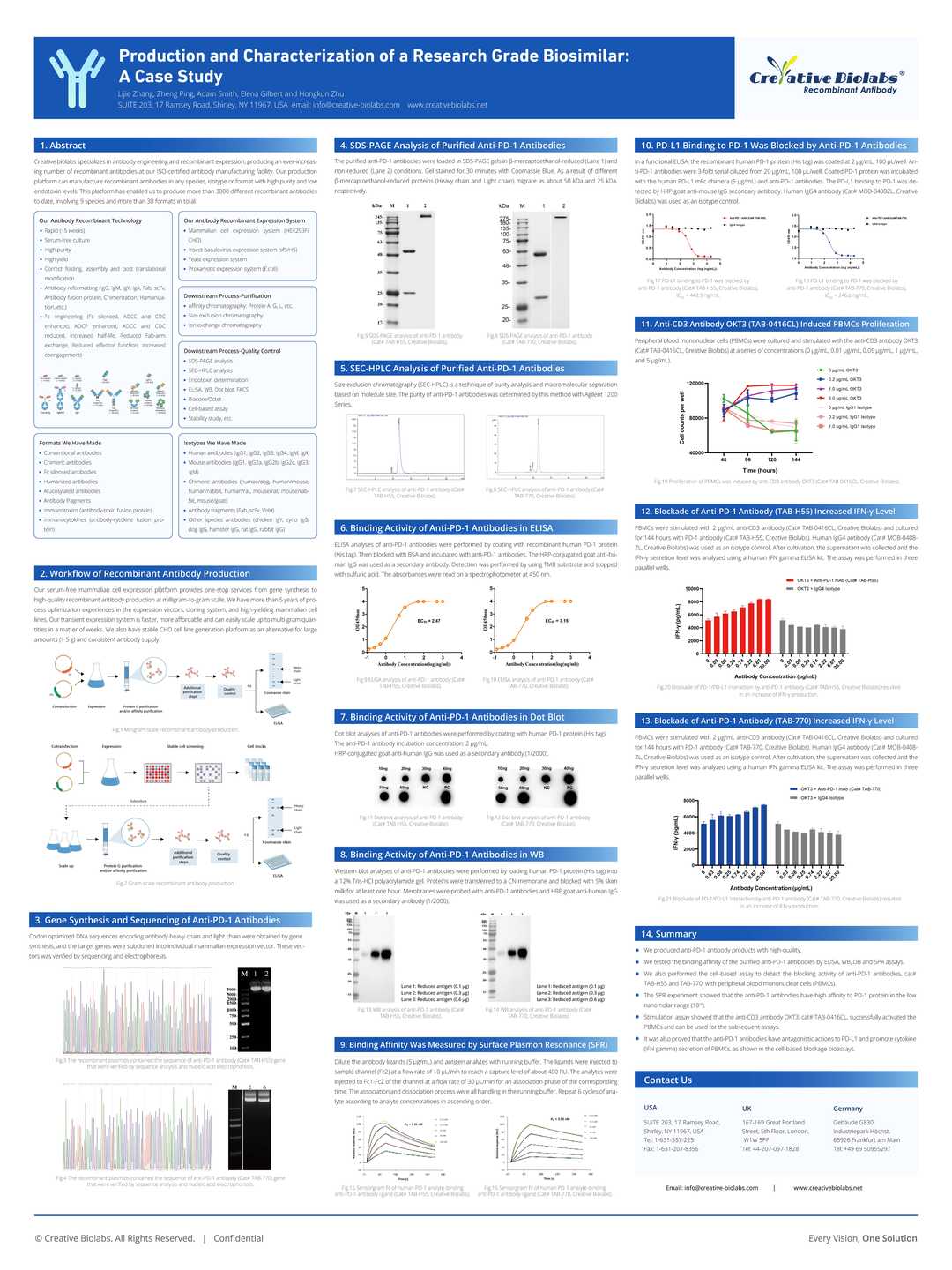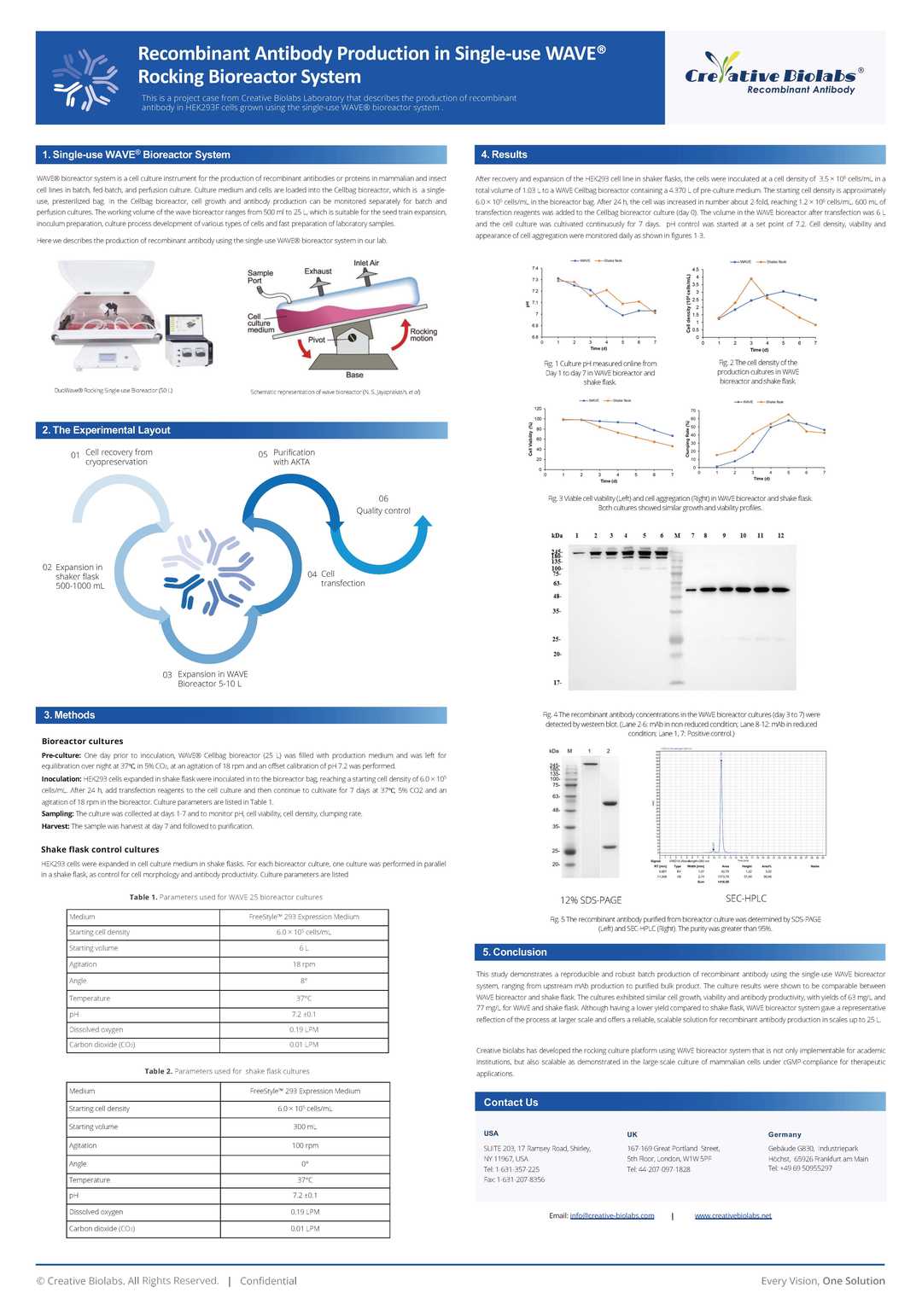Mouse Anti-EPHA2 Recombinant Antibody (VS3-CJ94)
CAT#: VS3-CJ94
This product is a mouse antibody that recognizes EPHA2.


Specifications
- Immunogen
- Recombinant fragment of human EphA2 (C-terminus)
- Host Species
- Mouse
- Type
- Mouse IgG
- Specificity
- Human EPHA2
- Species Reactivity
- Human
- Applications
- WB, ELISA
- Conjugate
- Unconjugated
Product Property
- Purification
- Protein G affinity purified
- Purity
- >95% as determined by SDS-PAGE
- Format
- Liquid
- Concentration
- 1 mg/mL (lot specific)
- Buffer
- 50% Glycerol, 1% BSA, PBS, pH7.4.
- Preservative
- 0.02% sodium azide
- Storage
- Store at 4°C for short term. Aliquot and store at -20°C for long term. Avoid repeated freeze/thaw cycles.
- Shipping
- Ice packs
Applications
- Application Notes
- This antibody has been tested for use in ELISA (1:5000-1:20000), Western Blot (1:100-1:2000).
Target
- Alternative Names
- ARCC2; CTPA; CTPP1; CTRCT6; ECK
- Gene ID
- 1969
- UniProt ID
- P29317
- Sequence Similarities
- Belongs to the protein kinase superfamily. Tyr protein kinase family. Ephrin receptor subfamily.
- Cellular Localization
- Cell junction, Cell membrane, Cell projection, Membrane
- Post Translation Modifications
- Autophosphorylates. Phosphorylated on tyrosine upon binding and activation by EFNA1. Phosphorylated residues Tyr-588 and Tyr-594 are required for binding VAV2 and VAV3 while phosphorylated residues Tyr-735 and Tyr-930 are required for binding PI3-kinase p85 subunit (PIK3R1, PIK3R2 or PIK3R3). These phosphorylated residues are critical for recruitment of VAV2 and VAV3 and PI3-kinase p85 subunit which transduce downstream signaling to activate RAC1 GTPase and cell migration. Dephosphorylation of Tyr-930 by PTPRF prevents the interaction of EPHA2 with NCK1. Phosphorylated at Ser-897 by PKB; serum-induced phosphorylation which targets EPHA2 to the cell leading edge and stimulates cell migration. Phosphorylation by PKB is inhibited by EFNA1-activated EPHA2 which regulates PKB activity via a reciprocal regulatory loop. Phosphorylated at Ser-897 in response to TNF by RPS6KA1 and RPS6KA3; RPS6KA-EPHA2 signaling pathway controls cell migration (PubMed:26158630).
Phosphorylated at Ser-897 by PKA; blocks cell retraction induced by EPHA2 kinase activity (PubMed:27385333).
Dephosphorylated by ACP1.
Ubiquitinated by CHIP/STUB1. Ubiquitination is regulated by the HSP90 chaperone and regulates the receptor stability and activity through proteasomal degradation. ANKS1A prevents ubiquitination and degradation (By similarity).
- Protein Refseq
- NP_004422.2
- Function
- Receptor tyrosine kinase which binds promiscuously membrane-bound ephrin-A family ligands residing on adjacent cells, leading to contact-dependent bidirectional signaling into neighboring cells. The signaling pathway downstream of the receptor is referred to as forward signaling while the signaling pathway downstream of the ephrin ligand is referred to as reverse signaling. Activated by the ligand ephrin-A1/EFNA1 regulates migration, integrin-mediated adhesion, proliferation and differentiation of cells. Regulates cell adhesion and differentiation through DSG1/desmoglein-1 and inhibition of the ERK1/ERK2 (MAPK3/MAPK1, respectively) signaling pathway. May also participate in UV radiation-induced apoptosis and have a ligand-independent stimulatory effect on chemotactic cell migration. During development, may function in distinctive aspects of pattern formation and subsequently in development of several fetal tissues. Involved for instance in angiogenesis, in early hindbrain development and epithelial proliferation and branching morphogenesis during mammary gland development. Engaged by the ligand ephrin-A5/EFNA5 may regulate lens fiber cells shape and interactions and be important for lens transparency development and maintenance. With ephrin-A2/EFNA2 may play a role in bone remodeling through regulation of osteoclastogenesis and osteoblastogenesis.
(Microbial infection) Acts as a receptor for hepatitis C virus (HCV) in hepatocytes and facilitates its cell entry. Mediates HCV entry by promoting the formation of the CD81-CLDN1 receptor complexes that are essential for HCV entry and by enhancing membrane fusion of cells expressing HCV envelope glycoproteins.
Customer Review
There are currently no Customer reviews or questions for VS3-CJ94. Click the button above to contact us or submit your feedback about this product.
Submit Your Publication
Published with our product? Submit your paper and receive a 10% discount on your next order! Share your research to earn exclusive rewards.
Downloadable Resources
Download resources about recombinant antibody development and antibody engineering to boost your research.
Product Notes
This is a product of Creative Biolabs' Hi-Affi™ recombinant antibody portfolio, which has several benefits including:
• Increased sensitivity
• Confirmed specificity
• High repeatability
• Excellent batch-to-batch consistency
• Sustainable supply
• Animal-free production
See more details about Hi-Affi™ recombinant antibody benefits.
Datasheet
MSDS
COA
Certificate of Analysis LookupTo download a Certificate of Analysis, please enter a lot number in the search box below. Note: Certificate of Analysis not available for kit components.
Isotype Control
- CAT
- Product Name
Secondary Antibody
- CAT
- Product Name
Recommended Dilution Buffer
- CAT
- Product Name
See other products for "EPHA2"
Select a product category from the dropdown menu below to view related products.
| CAT | Product Name | Application | Type |
|---|---|---|---|
| TAB-385MZ | Human Anti-EPHA2 Recombinant Antibody (TAB-385MZ) | ELISA | Humanized IgG |
| TAB-385MZ-S(P) | Human Anti-EPHA2 Recombinant Antibody; scFv Fragment (TAB-385MZ-S(P)) | ELISA | Humanized scFv |
| TAB-385MZ-F(E) | Human Anti-EPHA2 Recombinant Antibody; Fab Fragment (TAB-385MZ-F(E)) | ELISA | Humanized Fab |
| CAT | Product Name | Application | Type |
|---|---|---|---|
| TAB-380MZ-S(P) | Mouse Anti-EPHA2 Recombinant Antibody; scFv Fragment (TAB-380MZ-S(P)) | IHC, WB, sELISA | Mouse scFv |
| TAB-381MZ-S(P) | Anti-Human EPHA2 Recombinant Antibody scFv Fragment (LUCA40) | IHC, WB, sELISA | |
| TAB-382MZ-S(P) | Anti-Human EPHA2 Recombinant Antibody scFv Fragment (SPL1) | IHC, WB, sELISA | |
| TAB-383MZ-S(P) | Anti-Human EPHA2 Recombinant Antibody scFv Fragment (SG5 ) | IHC, WB, sELISA | |
| TAB-384MZ-S(P) | Mouse Anti-EPHA2 Recombinant Antibody; scFv Fragment (TAB-384MZ-S(P)) | ELISA | Mouse scFv |
| CAT | Product Name | Application | Type |
|---|---|---|---|
| MHC-LC145 | PE-A*02:01/Human EphA2 (TLADFDPRV) MHC Tetramer | FCM | |
| MHC-LC146 | APC-A*02:01/Human EphA2 (TLADFDPRV) MHC Tetramer | FCM |
| CAT | Product Name | Application | Type |
|---|---|---|---|
| MOR-1164 | Hi-Affi™ Rabbit Anti-EPHA2 Recombinant Antibody (clone DS1164AB) | WB | Rabbit IgG |
| CAT | Product Name | Application | Type |
|---|---|---|---|
| HPAB-0336-YC-S(P) | Mouse Anti-EPHA2 Recombinant Antibody; scFv Fragment (HPAB-0336-YC-S(P)) | ELISA, FC, FuncS | Mouse scFv |
| HPAB-0337-YC-S(P) | Human Anti-EPHA2 Recombinant Antibody; scFv Fragment (HPAB-0337-YC-S(P)) | ELISA, FC, FuncS | Humanized scFv |
| HPAB-0338-YC-S(P) | Human Anti-EPHA2 Recombinant Antibody (clone 2E7); scFv Fragment | ELISA | Human scFv |
| HPAB-0339-YC-S(P) | Mouse Anti-EPHA2 Recombinant Antibody (clone EA5); scFv Fragment | ELISA, FC, FuncS | Mouse scFv |
| HPAB-M0068-YC-S(P) | Human Anti-EPHA2 Recombinant Antibody (clone D2-1A7); scFv Fragment | Inhib | Human scFv |
| CAT | Product Name | Application | Type |
|---|---|---|---|
| HPAB-0336-YC-F(E) | Mouse Anti-EPHA2 Recombinant Antibody; Fab Fragment (HPAB-0336-YC-F(E)) | ELISA, FC, FuncS | Mouse Fab |
| HPAB-0337-YC-F(E) | Human Anti-EPHA2 Recombinant Antibody; Fab Fragment (HPAB-0337-YC-F(E)) | ELISA, FC, FuncS | Humanized Fab |
| HPAB-0338-YC-F(E) | Human Anti-EPHA2 Recombinant Antibody (clone 2E7); Fab Fragment | ELISA | Human Fab |
| HPAB-0339-YC-F(E) | Mouse Anti-EPHA2 Recombinant Antibody (clone EA5); Fab Fragment | ELISA, FC, FuncS | Mouse Fab |
| HPAB-M0068-YC-F(E) | Human Anti-EPHA2 Recombinant Antibody (clone D2-1A7); Fab Fragment | Inhib | Human Fab |
| CAT | Product Name | Application | Type |
|---|---|---|---|
| HPAB-M0068-YC | Human Anti-EPHA2 Recombinant Antibody (clone D2-1A7) | Inhib | Human IgG |
| HPAB-M0069-YC | Human Anti-EPHA2 Recombinant Antibody (clone TS1) | FC | Human IgG |
| HPAB-M0070-YC | Human Anti-EPHA2 Recombinant Antibody (clone Ab2) | FC | Human IgG |
| HPAB-M0071-YC | Human Anti-EPHA2 Recombinant Antibody (clone Ab3) | FC | Human IgG |
| VS-0623-WK75 | Human Anti-EPHA2 Recombinant Antibody (clone D2) | ELISA, WB, IF, Block | Human IgG |
| CAT | Product Name | Application | Type |
|---|---|---|---|
| VS-0724-XY25 | Rabbit Anti-EPHA2 Agonistic Antibody (VS-0724-XY25) | WB, ELISA, FC, IF, Agonistic assays | Rabbit IgG, kappa |
| VS-0724-XY26 | Human Anti-EPHA2 Agonistic Antibody (clone 1C1) | WB, ELISA, FC, IF, Agonistic assays | Human IgG1, kappa |
| CAT | Product Name | Application | Type |
|---|---|---|---|
| VS-0424-XY87 | AbPlus™ Anti-EPHA2 Magnetic Beads (VS-0424-XY87) | IP, Protein Purification |
| CAT | Product Name | Application | Type |
|---|---|---|---|
| VS-0325-FY81 | Human Anti-EPHA2 (clone 3F2) scFv-Fc Chimera | ELISA, IF, FC | Human IgG1, scFv-Fc |
| CAT | Product Name | Application | Type |
|---|---|---|---|
| VS-0425-YC564 | Recombinant Anti-EPHA2 Vesicular Antibody, EV Displayed (VS-0425-YC564) | ELISA, FC, Cell-uptake |
Popular Products

Application: IF, IP, Neut, FuncS, ELISA, FC, ICC

Application: FuncS, IF, Neut, ELISA, FC, IP, IHC

Application: IP, IF, FuncS, FC, Neut, ELISA, IHC

Application: IF, IP, Neut, FuncS, ELISA, FC, ICC
-2.png)
Application: WB, ELISA, FC, IHC, IP
-YJ5.png)
Application: WB, ELISA, FC, IHC, IP

Application: Neut, FC

Application: WB, ELISA, FuncS, Inhib, PK, IP, SPR

Application: ELISA, FuncS

Application: Neut, ELISA, IF, IP, FuncS, FC

Application: EM, ELISA, ICC, IHC-Fr, IHC-P, WB
For research use only. Not intended for any clinical use. No products from Creative Biolabs may be resold, modified for resale or used to manufacture commercial products without prior written approval from Creative Biolabs.
This site is protected by reCAPTCHA and the Google Privacy Policy and Terms of Service apply.


















